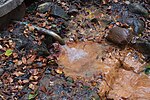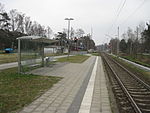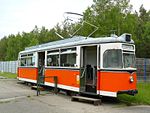Großer Wostevitzer Teich
Geography of RügenLakes of Mecklenburg-Western PomeraniaVorpommern-Rügen geography stubs
Großer Wostevitzer Teich is a lake on Jasmund peninsula of the island Rügen, Mecklenburg-Vorpommern, Germany. At an elevation of 0.2 m, its surface area is 0.743 km².
Excerpt from the Wikipedia article Großer Wostevitzer Teich (License: CC BY-SA 3.0, Authors).Großer Wostevitzer Teich
Südstraße, Bergen auf Rügen
Geographical coordinates (GPS) Address Nearby Places Show on map
Geographical coordinates (GPS)
| Latitude | Longitude |
|---|---|
| N 54.494769444444 ° | E 13.538416666667 ° |
Address
Südstraße
Südstraße
18528 Bergen auf Rügen
Mecklenburg-Vorpommern, Germany
Open on Google Maps











